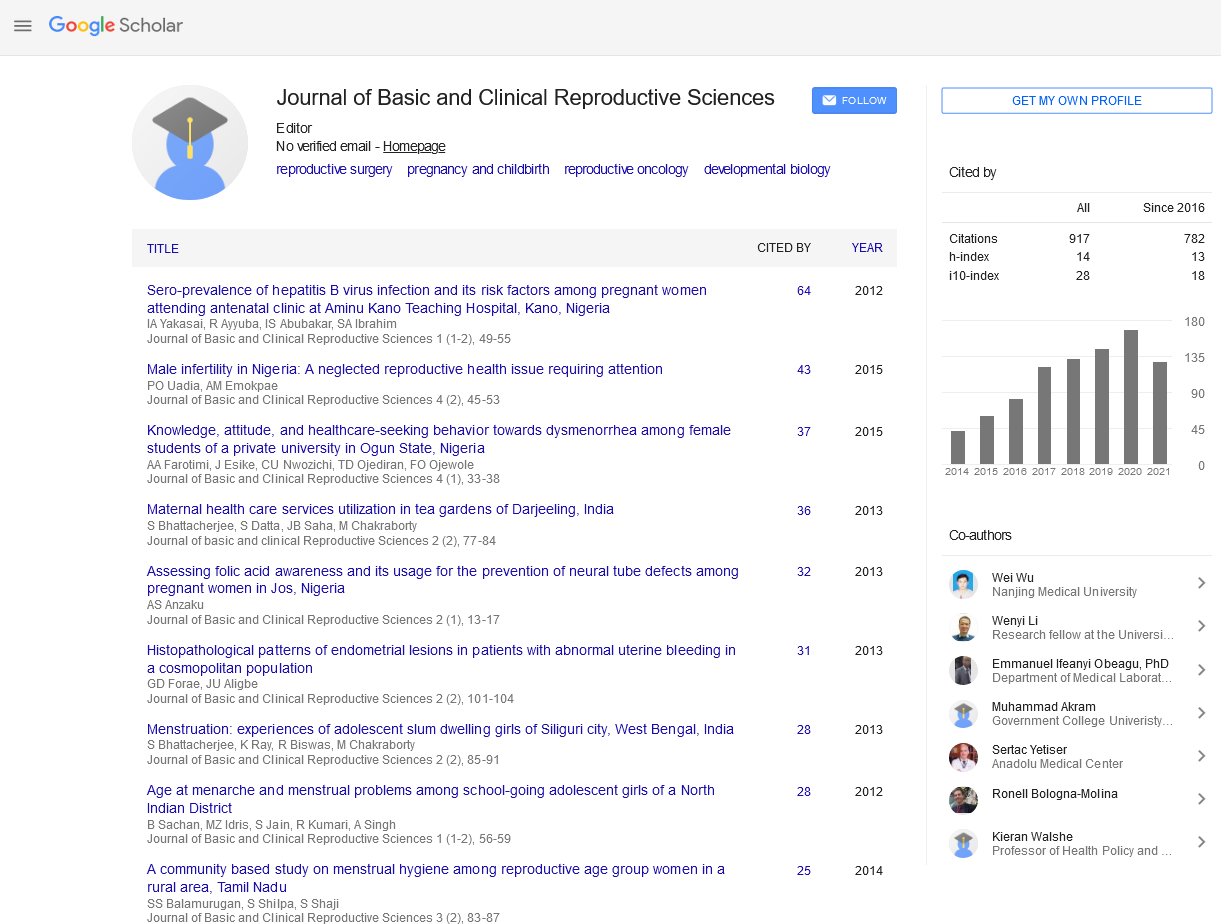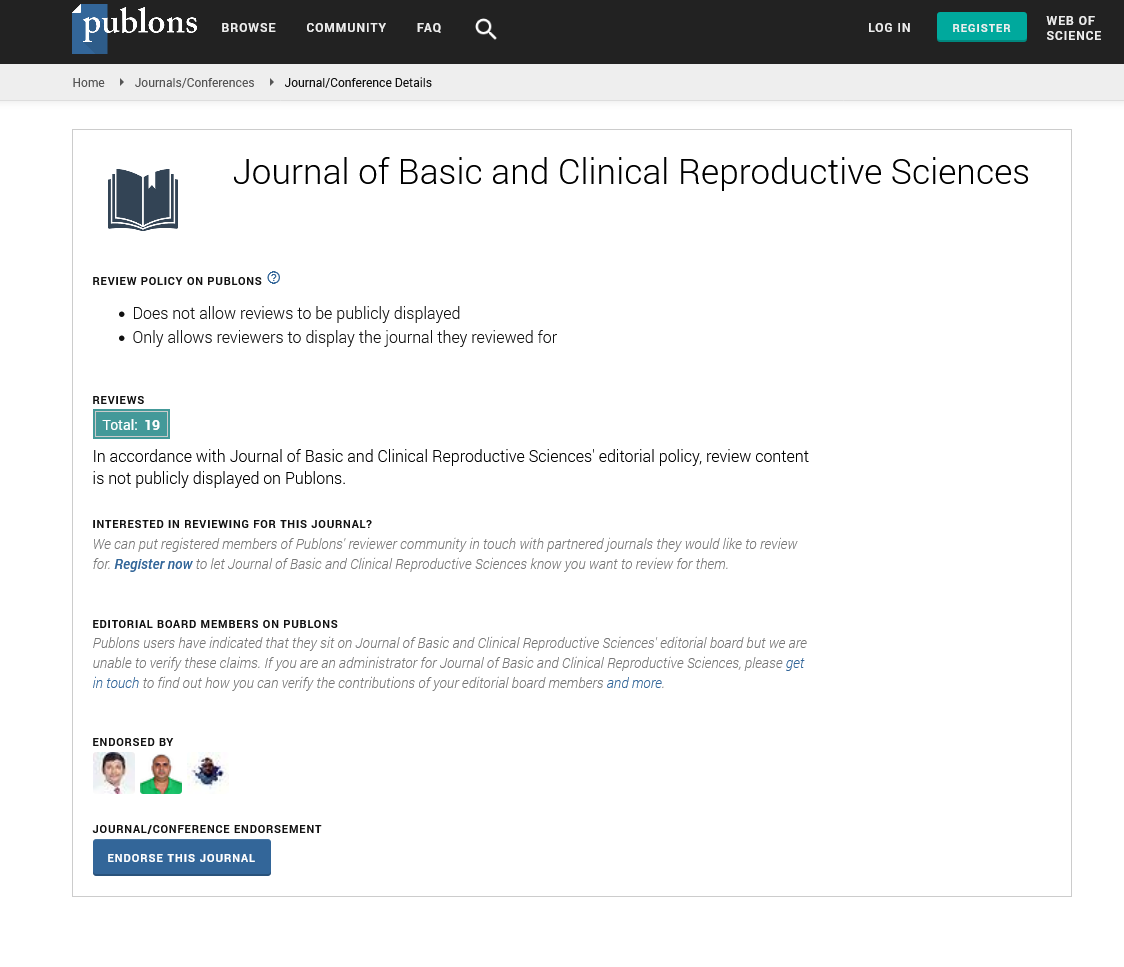Editorial - Journal of Basic and Clinical Reproductive Sciences (2021) Volume 10, Issue 4
Autism and Stem Cell Therapy
Received: 25-Mar-2021 Accepted Date: Apr 09, 2021 ; Published: 16-Apr-2021
This open-access article is distributed under the terms of the Creative Commons Attribution Non-Commercial License (CC BY-NC) (http://creativecommons.org/licenses/by-nc/4.0/), which permits reuse, distribution and reproduction of the article, provided that the original work is properly cited and the reuse is restricted to noncommercial purposes. For commercial reuse, contact reprints@pulsus.com
Abstract
Stem cells are undifferentiated, or “blank,” cells. This means they’re capable of developing into cells that serve numerous functions in different parts of the body. Most cells in the body are differentiated cells. These cells can only serve a specific purpose in a particular organ. For example, red blood cells are specifically designed to carry oxygen through the blood. All humans start out as only one cell. This cell is called a zygote, or a fertilized egg. The zygote divides into two cells, then four cells, and so on. Eventually, the cells begin to differentiate, taking on a certain function in a part of the body.
Biography
This process is called differentiation. Stem cells are cells that haven’t differentiated yet. They have the ability to divide and make an indefinite number of copies of themselves. Other cells in the body can only replicate a limited number of times before they begin to break down. When a stem cell divides, it can either remain a stem cell or turn into a differentiated cell, such as a muscle cell or a red blood cell.Stem cells are the body's raw materials — cells from which all other cells with specialized functions are generated. Under the right conditions in the body or a laboratory, stem cells divide to form more cells called daughter cells. These daughter cells either become new stem cells (selfrenewal) or become specialized cells (differentiation) with a more specific function, such as blood cells, brain cells, heart muscle cells or bone cells. No other cell in the body has the natural ability to generate new cell types. Stem cells are unspecialized cells of the human body. They are able to differentiate into any cell of an organism and have the ability of self-renewal. © 2021 Journal of Basic and Clinical Reproductive Sciences Vol 10 •Issue 4 Stem cells exist both in embryos and adult cells. There are several steps of specialization. Developmental potency is reduced with each step, which means that a unipotent stem cell is not able to differentiate into as many types of cells as a pluripotent one. Stem cells are important for living organisms for many reasons. In the 3- to 5-day-old embryo, called a blastocyst, the inner cells give rise to the entire body of the organism, including all of the many specialized cell types and organs such as the heart, lung, skin, sperm, eggs and other tissues. In some adult tissues, such as bone marrow, muscle, and brain, discrete populations of adult stem cells generate replacements for cells that are lost through normal wear and tear, injury, or disease


